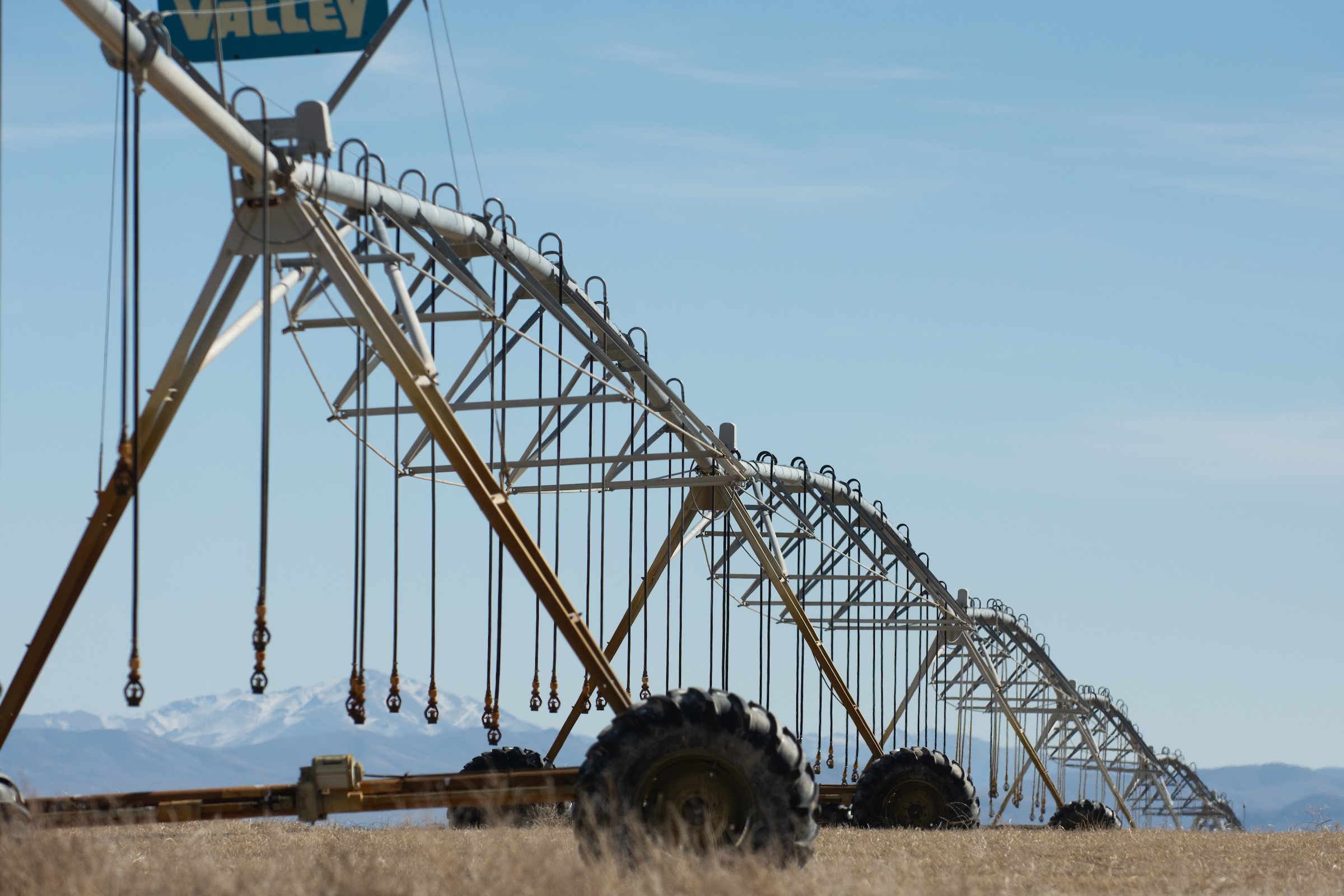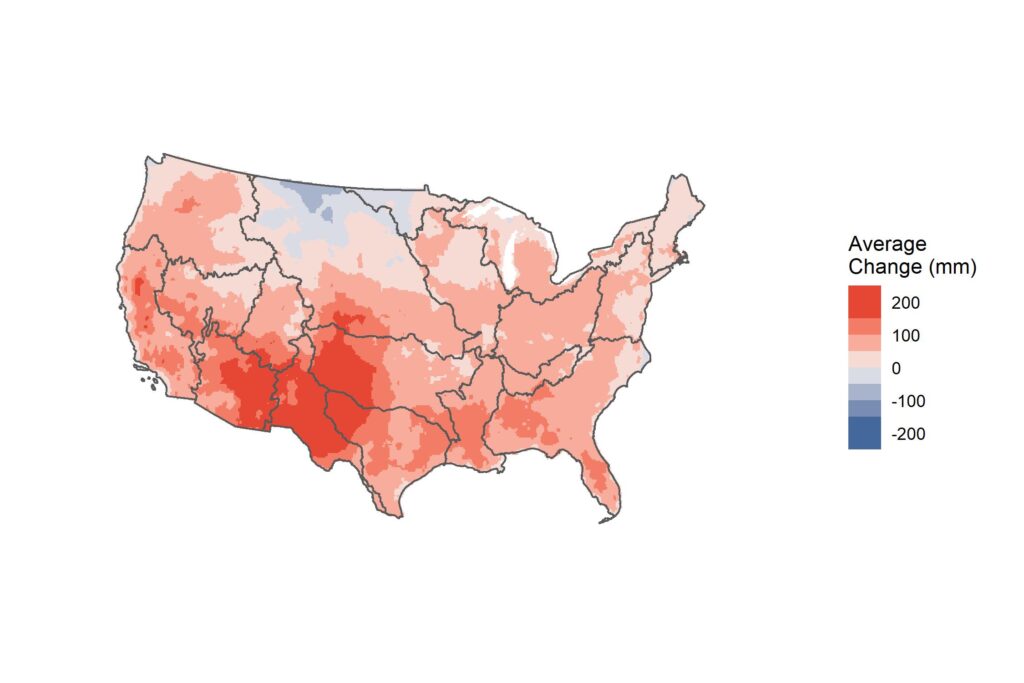Warming is making the West thirstier, researchers say. And it’s stressing water supplies.

Good morning, and welcome to the Indy Environment newsletter.
As always, we want to hear from readers. Let us know what you’re seeing on the ground and how policies are affecting you. Email me with any tips or suggestions at [email protected]
To get this newsletter in your inbox, subscribe here.
Over the past four decades, the Western U.S. has demanded more water.
And the landscapes — the valleys and mountains and lakes — that make up the region’s arid ecosystems have borne the impacts of increasing water needs in more ways than one. It’s not only fast-growing cities, searching for faraway supplies, that have affected these landscapes.
The atmosphere itself has become thirstier, using up, and potentially evaporating, more water from the land beneath it. Researchers describe this as increased evaporative demand, and it is an active area of study with major implications for water supply and increased fire risk.
In a new study released last month, researchers found that evaporative demand has increased over the last four decades, with temperatures playing a dominant role. In particular, the research documented significant increases around the Rio Grande and the Lower Colorado River basins, two drought-stressed areas. The research notes that more evaporative demand in arid regions has been associated with drought, wildfire severity, streamflow loss and stress on plant habitats.
For instance, increased evaporative demand can mean that irrigated crops might require more water than they needed in the past — a trend that places upward pressures on water supply.
Christine Albano, the lead author of the study and an assistant research professor at the Desert Research Institute, said the implications of increased evaporative demand are system-wide.
“An increase in evaporative demand is also affecting our snowpack,” Albano said in an interview last week. “It’s causing trees and plants to use more water if it’s available. It’s causing greater evaporation of water from our reservoirs. It’s sort of a double-whammy because it’s affecting demand — [the atmosphere needs] more water and yet we have less supply at the same time.”
The research, published in the The Journal of Hydrometeorology, is significant because it looks at five datasets and works to determine the different drivers contributing to evaporative demand.

Although temperature is a primary driver, other factors contribute to atmospheric thirst. The paper attributed roughly 26 percent of the increase to humidity, 10 percent to wind speed and 8 percent to solar radiation. Wind, for example, affects evaporative demand in the same way that laundry might dry faster on a windy day, rather than on a day when it is just warm, Albano said.
“We found that atmospheric thirst is consistently emerging outside the range experienced in the late twentieth century in some western regions with 57% of the change driven by temperature,” the researchers wrote. “Importantly, we demonstrate that increased atmospheric thirst has already become a persistent forcing of western landscapes and water supplies toward drought and will be an essential consideration for land and water management planning going forward.”
The fact that temperature is such a dominant driver is significant amid continued warming due to climate change. Past research, from climate scientists in Nevada and California, has modeled the ways evaporative demand is likely to increase multiyear droughts and fire risk.
In a press release, John Abatzoglou, a co-author and UC Merced researcher, said the research “shows the dominant role that warming has played on the increasing evaporative demand and foreshadows the increased water stressors the West faces with continued warming.”
Here’s what else I’m watching this week:
It’s official: Federal water managers approved plans to keep more water in Lake Powell, taking unprecedented and “extraordinary actions” to stabilize the critical Colorado River reservoir. The AP’s Sam Metz has more about what it all means. As KUNC’s Alex Hager reported, the overall message coming from top federal officials is encapsulated in this quote from Assistant Interior Secretary Tanya Trujillo: “Now is the time to do more. We do not have time to waste.” It recognizes that the Lake Powell actions are temporary, meant to prevent an immediate crisis. But the Colorado River needs long-term solutions to address aridification.
- The New York Times’ Henry Fountain on Las Vegas and nonfunctional turf removal.
- This is a fascinating article by The Salt Lake Tribune’s Zac Podmore on how sediment is moving into Lake Powell. “It feels like a dying reservoir,” one former river guide said.
- A body on the shores of a dwindling Lake Mead: In a gruesome development with the ongoing decline of Lake Mead, boaters discovered a body near Hemenway Harbor this weekend, as was first reported by 8 News Now’s David Charns. And there could be more to come, The New York Times’ Eduardo Medina reported: “The drop in the lake’s water level could result in other bodies being found at the lake, Lieutenant Spencer said. Rangers with the National Park Service find one or two bodies at Lake Mead every year, he said, ‘so it’s not uncommon to work a homicide out at the lake.’”
Crowell appointed to Nuclear Regulatory Commission: President Joe Biden is nominating Brad Crowell, who leads the Nevada Department of Conservation and Natural Resources, to serve on the Nuclear Regulatory Commission, The Review-Journal’s Gary Martin reported. Crowell served at the Department of Energy from 2010 to 2016 before Gov. Brian Sandoval appointed him to lead the state’s natural resource agency. The nomination must be confirmed by the U.S. Senate. The Nuclear Regulatory Commission oversaw licensing hearings for the Yucca Mountain waste repository, a process that ended during the Obama administration.
The Reno Philharmonic is performing a piece centered on climate change. “This is a project that sheds both light and hope on one of the most urgent issues of our time: climate change,” Reno Phil Music Director Laura Jackson told the Reno Gazette Journal’s Jenny Kane last week. “There is no question that we are in an era where human impact has reached every corner of the earth, and we can no longer take for granted the health and abundance of the natural resources we hold dear.” There’s more information on the Reno Phil’s website.
Federal land managers begin review of a closely-watched transmission project across Nevada. Pahrump Valley Times’ Daria Sokolova has more on it and how to submit comments.
A reminder that climate change is a national and global problem: I’ve been thinking a lot about this watching the news of a severe heat wave across South Asia, threatening millions of people, and the thousands of people, threatened by wildfire, who are evacuated in New Mexico.
